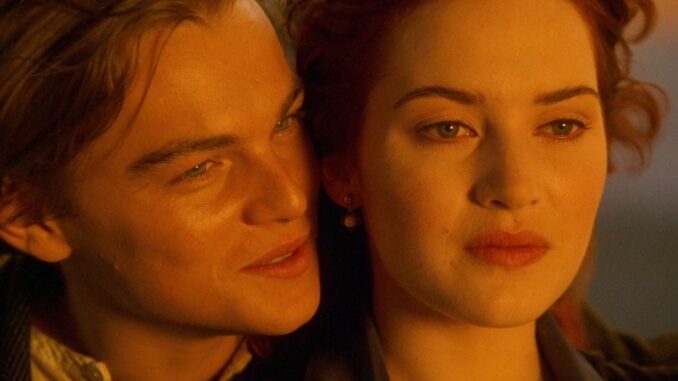
The Plank and the Paradox: Kate Winslet's Revelation on the Enduring Power of Titanic
The image is etched in popular consciousness: Rose DeWitt Bukater, clinging precariously to a wooden plank in the frigid Atlantic, while Jack Dawson, submerged to his neck, stares up at her, his voice a soft whisper against the roar of the drowning souls. This is the iconic final scene of James Cameron’s “Titanic,” a moment of heartbreaking tragedy that has both captivated and infuriated audiences for decades. But beyond the tears and the debate over whether Jack could have fit on the door, lies a more nuanced truth, revealed recently by Kate Winslet herself: the scene, while emotionally resonant, was perhaps more logistically absurd than we initially thought. This admission, surprising to some, actually deepens our understanding of the film’s enduring power, illustrating how emotional truth can triumph over physical plausibility and how a seemingly simple scene can ignite a cultural firestorm.
Winslet’s revelation, usually delivered with a wry smile and a roll of her eyes, typically centers around the infamous plank. She’s often stated, with varying degrees of exasperation, that there was indeed room for Jack on the makeshift raft. This seemingly simple assertion has unleashed torrents of online debate, fueled by amateur physicists and frustrated fans alike. But her honesty transcends the purely technical. It shines a light on the creative license taken by the filmmakers, a deliberate choice to prioritize the narrative's emotional core over absolute realism.
Consider the scene without the knowledge of this "plank paradox." It's a stark tableau of sacrifice and survival. Jack, embodying selfless love, chooses to remain in the icy water, ensuring Rose's survival even at the cost of his own life. The scene underscores the film's themes of class difference, redemption, and the enduring power of love in the face of overwhelming tragedy. It’s a masterclass in visual storytelling, relying on the stark contrast between the warm glow of Rose clinging to life and the chilling darkness consuming Jack. The tension is palpable, the stakes impossibly high. The image is etched into our collective memory not because it’s logically sound, but because it’s emotionally devastating.
Now, consider the scene with Winslet’s candid commentary in mind. The inherent absurdity of the situation, the knowledge that Jack could have potentially squeezed onto the plank, doesn’t necessarily diminish the emotional impact. Instead, it adds another layer to the narrative. It highlights the power of storytelling to manipulate our emotions, to suspend our disbelief, and to prioritize the message over the meticulous details. We are not necessarily supposed to analyze the load-bearing capacity of the door; we are supposed to grieve for Jack, to celebrate Rose's resilience, and to reflect on the fragility of life.
Furthermore, Winslet’s honesty humanizes the film, reminding us that even the most meticulously crafted cinematic creations are products of artistic choices, not absolute historical accuracy. It removes the film from the realm of untouchable perfection and places it back in the hands of the audience, inviting us to engage with it on a more critical and personal level. The debate surrounding the plank becomes a conversation about the nature of storytelling, the importance of emotional resonance, and the enduring appeal of a timeless love story.
In conclusion, Kate Winslet’s revelation about the "Titanic" plank is not a scathing indictment of the film's artistic integrity. Rather, it's a fascinating insight into the power of cinema to transcend the limitations of reality. It underscores the fact that a film's enduring legacy often lies not in its flawless execution of every minute detail, but in its ability to connect with audiences on a profound emotional level. The plank, therefore, becomes a symbol of the film's paradox: a logistical absurdity that, paradoxically, contributes to its enduring emotional power. It reminds us that sometimes, the truth lies not in the factual accuracy of a scene, but in the emotional truth it conveys, a truth that continues to resonate with audiences long after the credits roll.
